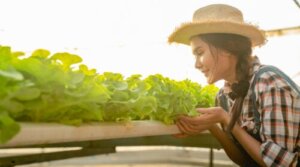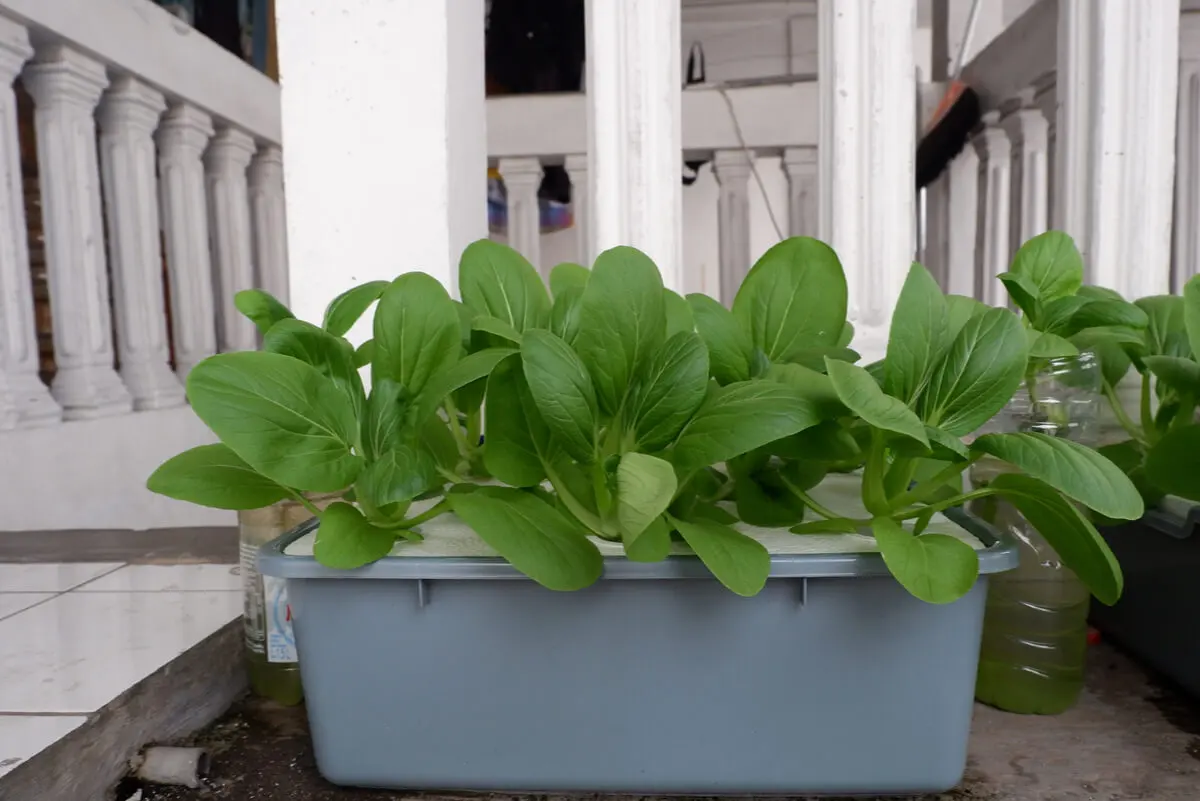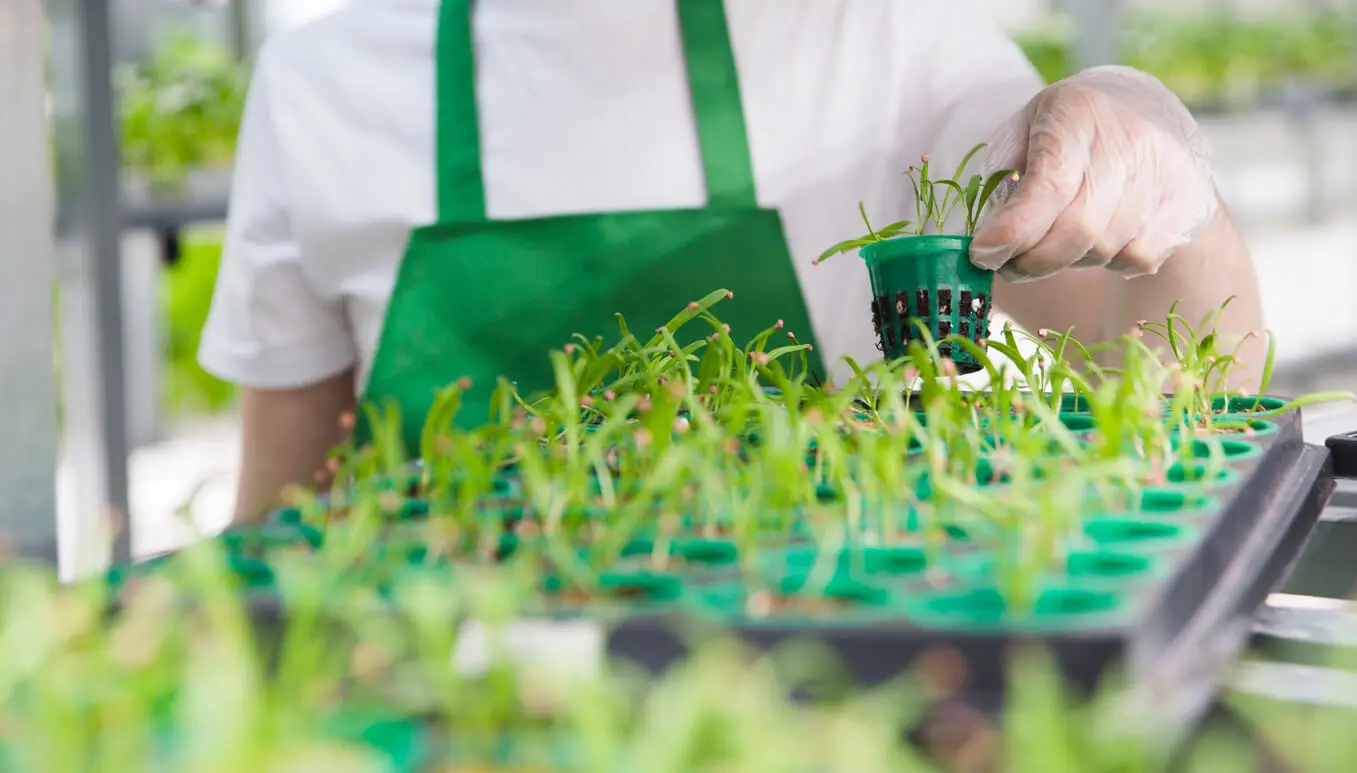8 Tips for Successful Hydroponic Crops

Plant growth no longer depends only on the soil and the condition of the soil thanks to hydroponic crops. It’s possible to generate entire vegetable gardens by recirculating mineralized water. This is a common method in large plantations, but hydroponic crop cultivation is also possible at home.
Among the advantages are lower water consumption, closer control of plant development, and a high yield. Hydroponic cultivation began decades ago, but nowadays it is increasingly common in horticulture. That is, for the production of vegetables, such as tomatoes, carrots, or onions.
With just a few plastic containers, wood, oxygenation, and the necessary water nutrients, it’s possible to set up a hydroponics garden at home. We explain it to you.
What are hydroponic crops?
Hydroponics or hydroponic agriculture is a growing technique that dispenses with soil or substrate as the main element. Instead, plants develop through a water circuit and grow by recirculating water with mineral solutions.
Chemical elements used to ensure growth include nitrogen, calcium, potassium, iron, manganese and sulfur. While almost all plants can be grown using hydroponics, it is commonly applied for horticulture (tomato, onion, leek, lettuce, spinach and strawberry).
Many large growers use this technique as the main technique in indoor growing. In addition, it works well in areas where soils are not suitable for certain plantings. When integrated into greenhouses, it can boost vegetation development to higher levels than traditional cultivation.

Advantages of hydroponics
Hydroponics has many advantages, due to its simplicity, cleanliness and low cost. These advantages are common for both industrial and home production:
- Ecology: it is more environmentally friendly, as it reduces water consumption. Recirculation allows less liquid to be used to water the plants.
- Yield: when the method is applied efficiently, it is possible to achieve similar or better results than open-air cultivation.
- Cleanliness: this is a hygienic method, which is also a necessity. The space for hydroponic cultivation must be clean, disinfected and free of pests.
- Monitoring: with this technique it is easier to control the state of the plantation. In addition to identifying which minerals are lacking or in short supply.
- Adaptation: because it is a controlled crop, it is adaptable to any geographical area and independent of climatic conditions.
- Own food: with hydroponic cultivation it is possible to have organic food produced by oneself.
Read Smart Pots: See How They Work and the Benefits for Your Plants
The best tips to have a hydroponic crop at home
This method is used in large horticultural plantations, but it is also adaptable to a small scale. With a series of materials and steps to follow, it’s possible to bring hydroponics to home farming.
1. Control water and minerals
Hydroponics relies on water as the nutrient medium for plants. In general, no soil, or only clay, is used, so the treatment of the liquid is crucial.
In the beginning, osmosis water should be provided, i.e. free of any harmful substances such as chlorine or lead. Then the necessary fertilizer will be added.
It is recommended that the temperature of the water should be between 18 and 21 degrees Celsius. On the other hand, it is very important to check the pH level constantly, since variations can affect the crops.
The correct level, at the beginning, is 5.8. It is increased to 6 during flowering and to 6.2 in the following period.
2. Measure the electroconductivity (EC)
The EC functions to show how much electricity the water transmits through the mineral salts. In other words, the amount of fertilizer it contains.
In this way, it is possible to control whether to add or reduce the amount. A level of 0.8 is best at the start of planting, and it rises to 1 after the first few weeks. Then, to 1.5.
3. Prevent pests
Even if plants are not in contact with the soil, the possibility of pests remains. Moreover, if they attack a hydroponic plantation, their eradication is quite complex.
Therefore, it is advisable to apply preventive measures by spraying. Use fungicides during the growth phase.
4. Sustain the oxygen level in hydroponics
Not only the water is important, but also the oxygen that travels through the water. Placing an air pump, such as those found in fish tanks, is essential to keep the roots healthy. It also prevents stagnation.
5. Managing growth and fertilization on hydroponic crops
Hydroponic growing presents some details to which to pay more attention, compared to planting in soils. For example, growth. So that the flowers do not exceed the weight that the structure of a plant that does not have a firm grip can support, you add silicate to the water.
This is a mineral that favors its resistance. On the other hand, not just any fertilizer is useful in this type of planting. In general, mineral fertilizers are prioritized over organic fertilizers, due to the liquid density of the latter.
6. Have the right tools
In addition to the oxygen, minerals, and fertilizers needed, it is important to have the basic materials to set up a hydroponic crop. For example, a dark container for the roots, a plastic plug, wooden boards and a special substrate with clay or coconut fiber.
7. Assemble the structure
Firstly, make holes in the container to the same extent as the plastic plug, through which the water will drain. Then, make holes with distances of 10 centimeters to the wooden board. The roots delicately go out through these holes and the substrate goes into the container.

8. Hydroponic crops: Attend to sunlight
This technique requires plenty of natural light, but not direct and constant. The frontal sun rays can affect growth and burn the leaves.
Therefore, make sure that the home hydroponic crop is getting enough light, but from a strategic location.
Dedicate time to your hydroponic crops
Although it is a task as accessible as any form of cultivation, this technique usually demands quite a lot of time for maintenance and control. So it is important to have several hours available for a hydroponic grow.
Managing pH, mineral levels, pest control and plant structure all require work. However, the result will be worth the effort.
All cited sources were thoroughly reviewed by our team to ensure their quality, reliability, currency, and validity. The bibliography of this article was considered reliable and of academic or scientific accuracy.
- Beltrano, José, and Daniel O. Gimenez. “Introducción Al Cultivo Hidropónico.” Cultivo en hidroponía 1.978-950-34-1258–9 (2015): 181. Disponible en: http://sedici.unlp.edu.ar/bitstream/handle/10915/46752/Documento_completo.pdf?sequence=1
- López-Cruz, Irineo Lorenzo, Salazar-Moreno, Raquel, Rojano-Aguilar, Abraham, La eficiencia en el uso del agua en la agricultura controlada. Tecnología y Ciencias del Agua [Internet]. 2014;V(2):177-183. Recuperado de: https://www.redalyc.org/articulo.oa?id=353531987011
- Menegaes, Janine Farias et al. “Produção Sustentável de Alimentos Em Cultivo Hidropônico.” Revista Monografias Ambientais 14.3 (2015): 102–108. Disponible en: https://doi.org/10.5902/2236130818750
- Longar Blanco, María del Pilar, Pérez Hernández, María del Pilar M., Ríos Martínez, Edson, El estado de técnica de la hidroponía. Revista Mexicana de Ciencias Agrícolas [Internet]. 2013;4(5):803-809. Recuperado de: https://www.redalyc.org/articulo.oa?id=263127573012
- Hernández-Vergara, Martha Patricia , Pérez-Rostro, Carlos Iván , Ronzón-Ortega, Marisol , PRODUCCION HIDROPÓNICA Y ACUAPÓNICA DE ALBAHACA (Ocimum basilicum) Y LANGOSTINO MALAYO (Macrobrachium rosenbergii). Tropical and Subtropical Agroecosystems [Internet]. 2012;15(2):S63-S71. Recuperado de: https://www.redalyc.org/articulo.oa?id=93924626009
This text is provided for informational purposes only and does not replace consultation with a professional. If in doubt, consult your specialist.








